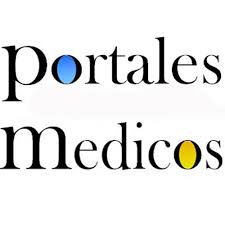Experiencias psicosociales, funcionales y protésicas de pacientes con amputación transfemoral unilateral
Resumen
DOI: https://doi.org/10.53766/AcBio/2025.15.29.04
Introducción: La amputación de una extremidad es un problema de salud que causa discapacidad física e implicaciones psicosociales y funcionales que afectan la calidad de vida de la persona que debe afrontar esta experiencia traumática, al tiempo que debe adaptarse a una nueva forma de vida. Objetivo: Explorar las experiencias psicosociales, funcionales y protésicas de los pacientes con amputación transfemoral unilateral. Métodos: Investigación cualitativa – interpretativa de las experiencias de personas con amputación transfemoral; se aplicó una entrevista estructurada a la muestra de estudio conformada por 13 pacientes que aceptaron su participación en el estudio por medio del consentimiento informado. Resultados y discusión: El componente psicosocial, funcional y protésico es prioritario en los procesos de atención y rehabilitación del paciente amputado. Los pacientes refieren que una amputación es una situación catastrófica en la vida de la persona y que el proceso de afrontamiento depende de las redes de apoyo y el seguimiento en el proceso de rehabilitación, lo que influirá positiva o negativamente en el retorno a las Actividades de la Vida Diaria (AVD) y a la reincorporación y participación en la comunidad. Conclusión: Vivir la experiencia de la amputación de un miembro o de cualquier parte del cuerpo es necesariamente vivir una experiencia traumática que deja marcas permanentes tanto en el cuerpo físico como mental. Por tratarse de un evento traumático que afecta la vida de la persona en general, es fundamental ofrecer intervenciones multidisciplinarias que ayuden a alcanzar un nivel óptimo de calidad de vida en los pacientes.
Recibido: 22/06/2024
Aceptado: 1/08/2024
Publicado en línea: 22/10/2024
Palabras clave
Texto completo:
PDFReferencias
Huynh, T, Kuruvilla, D, Nester, M, Zervoudakis, G, Letson, G, Joyce, D, et al. Limb Amputations in Cancer: Modern Perspectives, Outcomes, and Alternatives. Curr Oncol Rep. 2023;25(12):1457–65. DOI: http://dx.doi.org/10.1007/s11912-023-01475-5
Essien, S, Kopriva, D, Linassi, A, Zucker-Levin, A. Trends of limb amputation considering type, level, sex and age in Saskatchewan, Canada 2006–2019: an in-depth assessment. Arch Public Heal. 2022;80(1):1–9. DOI: http://dx.doi.org/10.1186/s13690-021-00759-1
Ozkan S, Adanas, C. The causes and levels of lower limb amputation in geriatric patients. Ann Med Res. 2021;28(5):893. DOI: http://dx.doi.org/10.5455/annalsmedres.2020.05.508
DANE. Personas con discapacidad, retos diferenciales en el marco del COVID-19 [Internet]. Dane. 2020. p. 1–9. Disponible en: https://www.dane.gov.co/files/investigaciones/discapacidad/2020-Boletin-personas-con-discapacidad-marco-COVID-19.pdf
Ministerio de Salud y Protección Social. Analisis descriptivo de indicadores: Observatorio Nacional de Discapacidad [Internet]. 2014. Disponible en: https://www.minsalud.gov.co/sites/rid/Lists/BibliotecaDigital/RIDE/VS/ED/GCFI/Guia-observatorio-discapacidad.pdf
Ministerio de salud y protección social. Sala situacional de Personas con Discapacidad [Internet]. 2015. [citado: 18/11/2022]. p. 56. Disponible en: https://www.minsalud.gov.co/sites/rid/Lists/BibliotecaDigital/RIDE/DE/PS/sala-situacional-discapacidad-junio-2018.pdf
Gutiérrez Fernández, M, Carrasco de Andrés, D, Salmerón Febres, L, González Herrera, L, Jiménez Brobeil, S. Impact of socioeconomic status on the clinical profile of patients with non-traumatic lower-limb amputation. Cirugía Española (English Ed. 2021;99(1):55–61. http://dx.doi.org/10.1016/j.cireng.2020.12.006
Ro?ca, A, Baciu, C, Burtaverde, V, Mateizer, A. Psychological Consequences in Patients With Amputation of a Limb. An Interpretative-Phenomenological Analysis. Front Psychol. 2021;12. DOI: http://dx.doi.org/10.3389/fpsyg.2021.537493
Pezzin, L, Dillingham, T, MacKenzie, E. Rehabilitation and the long-term outcomes of persons with trauma-related amputations. Arch Phys Med Rehabil. 2000;81(3):292–300. DOI: https://doi.org/10.1016/S0003-9993(00)90074-1
Hernández-Sampieri, R, Fernandez-Collado, C, Baptista-Lucio, P. Metodología de la investigación. 6ta edició. : Mc Gram Hill/ Interamericana Editores S., editor. Mc Gram Hill/ Interamericana Editores, S.A.; 2014. 634 p.
Font M. Características y Experiencias del paciente con pie diabético y amputación [Internet]. 2016. [citado: 18/06/2023]. Disponible en: https://www.tdx.cat/bitstream/handle/10803/399233/TESI.pdf?sequence=1&isAllowed=y
Pourfahimi A, Khaneh-Keshi A, Homayouni A. The Mediating Role of Mental Toughness in the Relationship between Mindfulness and Body Image Concern in Amputees. Neurosci J Shefaye Khatam. [Internet]. 2023. [citado: 18/06/2023];11(4):42–53. Disponible en: http://ijrn.ir/article-1-793-en.html
Muela, A, Sansinenea, E. Tratamientos psicológicos personalizados - Orientaciones clínicas. Papeles del psicólogo. [Internet].2020[citado: 18/07/2023];41(1):16–26. Disponible en: https://scielo.isciii.es/scielo.php?script=sci_arttext&pid=S0214-78232020000100016
Valencia-Garcia, H. Experiencia de adaptación de las personas amputadas: La relación entre la protesis y el bienestar psicológico. Nure Investig [Internet]. 2022. [citado: 12/09/2023];19(118). Disponible en: https://www.nureinvestigacion.es/OJS/index.php/nure/article/view/2148#:~:text=Tras la amputación de un,el concepto de una misma.
Pomares G, Coudane H, Dap F, Dautel G. Psychological effects of traumatic upper-limb amputations. Orthop Traumatol Surg Res. 2020;106(2):297–300. DOI: https://doi.org/10.1016/j.otsr.2019.12.013
Stoddard J, White K, Covino N, Strauss L. Impact of a brief intervention on patient anxiety prior to day surgery. J Clin Psychol Med Settings [Internet]. 2005;12(2):99–110. DOI: https://doi.org/10.1007/s10880-005-3269-6
Horgan, O, MacLachlan, M. Psychosocial adjustment to lower-limb amputation: A review. Disabil Rehabil [Internet]. 2004;26(14–15):837–50. DOI: https://doi.org/10.1080/09638280410001708869
Hanley M, Jensen M, Ehde D, Hoffman A, Patterson D, Robinson L. Psychosocial predictors of long-term adjustment to lower-limb amputation and phantom limb pain. Disabil Rehabil [Internet]. 2004;26(14–15):882–93. DOI: https://doi.org/10.1080/09638280410001708896
Saradjian, A, Thompson, A, Datta, D. The experience of men using an upper limb prosthesis following amputation: Positive coping and minimizing feeling different. Disabil Rehabil. 2008;30(11):871–83. DOI: https://doi.org/10.1080/09638280701427386
Jiménez K. Ajuste Psicosocial En Pacientes Amputados: La Psicología en el Contexto Sanitario. Rev Cúpula [Internet]. 2017. [citado: 15/10/2023];31(2):8–43. Disponible en: http://www.binasss.sa.cr/bibliotecas/bhp/cupula/v31n2/art02.pdf
Srisuwan B, Klute, G. Locomotor Activities of Individuals with Lower Limb Amputation. 2020;45(3):315–24. DOI: https://doi.org/10.1097/PXR.0000000000000009
Bramati I, Rodrigues E, Simões E, Melo B, Höfle S, Moll J, et al. Lower limb amputees undergo long-distance plasticity in sensorimotor functional connectivity. Sci Rep. 2019;9(1):1–11. DOI: https://doi.org/10.1038/s41598-019-39696-z
Shevchuk V, Bezsmertnyi Y, Bezsmertna H, Dovgalyuk T, Jiang Y. Biomechanical factors in residual limb formation after amputation. Wiad Lek. 2021;74(7):1581–6. DOI: https://doi.org/10.36740/WLek202107106
Lazcano-Ortiz, M, Pelcastre-Portillo, S, Martínez-Hernández, X, Lazcano-González, B, Vargas-Castro, B, Fragoso-Gómez, E, et al. Adaptación en el paciente con amputación: una mirada desde la teoria de Roy. Educ y Salud Boletín Científico Inst Ciencias la Salud Univ Autónoma del Estado Hidalgo. 2021;9(18):133–40. DOI: http://dx.doi.org/10.29057/icsa.v9i18.6723
Reséndiz-Vega, H, Serrano-Rosales, M. Implicaciones en el movimiento humano de las adaptaciones del esquema e imagen corporal secundarias a una amputación. ARS MEDICA Rev Ciencias Médicas. 2020;45(3):63–71. DOI: http://dx.doi.org/10.11565/arsmed.v45i3.1636
Sánchez-Rojas A, García-Galicia A, Vázquez-Cruz, E, Montiel-Jarquín, Á, Aréchiga-Santamaría A. Self-image, self-esteem and depression in children and adolescents with and without obesity. Gac Med Mex. 2022;158(3):124–9. DOI: http://dx.doi.org/10.24875/gmm.21000817
Lee, H, Chung, D. Characterization of the Core Determinants of Social Influence From a Computational and Cognitive Perspective. Front Psychiatry. 2022;13(April):1–11. DOI: https://doi.org/10.3389%2Ffpsyt.2022.846535
Goofman E. Estigma. La identidad deteriorada. [Internet]. 1era ed. Amorrortu, editor. Vol. 314. Buenos Aires - Argentina; 1997. 1–84 p. Disponible en: https://sociologiaycultura.wordpress.com/wp-content/uploads/2014/02/goffman-estigma.pdf
Couture M, Desrosiers J, Caron C. Coping with a Lower Limb Amputation due to Vascular Disease in the Hospital, Rehabilitation, and Home Setting. ISRN Rehabil. 2012;2012(March):1–9. DOI: https://doi.org/10.5402/2012/179878
So-Hye, J, Suk-Hun, K, Wan-Seok, S, Bon-Hoon K, Hye-Geum, K, Seok-Ho, Y. Psychiatric understanding and treatment of patients with amputations. Yeungnam Univ J Med. 2021;38(3):194–201. DOI: https://doi.org/10.12701/yujm.2021.00990
Xuejun Y, Zheng, W, Wei, A, Shengtao, X, Ningjuan F, Yizhao, C, et al. Investigation on the relationship between Eysenck personality type and the survival rate of traumatic amputated finger replantation based on preventive psychology. Prev Med (Baltim). 2023;174. DOI: https://doi.org/10.1016/j.ypmed.2023.107624
Kristjansdottir F, Dahlin, L, Rosberg, H, Carlsson, I. Social participation in persons with upper limb amputation receiving an esthetic prosthesis. J Hand Ther. 2020;33(4):520–7. DOI: https://doi.org/10.1016/j.jht.2019.03.010
Muñoz-Solera C, Sisamón-Marco, I, Ponce-Lázaro, M, Guerrero, B, Lozano-Alonso, S, García-Ándres, I. Revisión sistémica: Cuidados del paciente amputado. Rev Sanit Investig [Internet]. 2021. [citado: 16/11/2023];2(9). Disponible en: https://revistasanitariadeinvestigacion.com/revision-sistemica-cuidados-del-paciente-amputado/
Mosaku, K, Akinyoola, A, Fatoye, F, Adegbehingbe, O. Psychological reactions to amputation in a sample of Nigerian amputees. Gen Hosp Psychiatry [Internet]. 2009;31(1):20–4. DOI: http://dx.doi.org/10.1016/j.genhosppsych.2008.08.004
Guzmán-Pizarro, J, Loayza-Effio, J, Flores-Galarreta, B, Medina-Sotelo, C. Empleo, discapacidad y pandemia: el trabajo remoto en tiempos de crisis. Apunt Univ. 2021;12(1):335–52. DOI: http://dx.doi.org/10.17162/au.v12i1.973
Villaseñor-Rodríguez, F, Villaseñor-Rodríguez F. Discapacidad, Resiliencia Y Calidad De Vida. Diversitas. 2023;19(1):36–44. DOI: http://dx.doi.org/10.15332/22563067.9170
Paz-Maldonado, E, Silva-Peña, I. Inserción laboral de personas en situación de discapacidad en América Latina. Saude e Soc. 2020;29(4):1–12. DOI: http://dx.doi.org/10.1590/s0104-12902020190724
Batuak L. La percepción social de la discapacidad. [Internet]; 2006[citado:12/08/2023]. Disponible en: http://sid.usal.es/idocs/F8/FDO27069/monografico_1.pdf
Organización Mundial de la Salud y Banco mundial. Resumen: Informe mundial sobre discapacidad discapacidad [Internet]. Organización Mundial de la Salud. 2011. Disponible en: http://www1.paho.org/arg/images/Gallery/Informe_spa.pdf
Alianza para el emprendimiento e Innovación. Ecuador, un país emprendedor e innovador en el 2020 [Internet]. 2014[citado:18/08/2023]. Disponible en: https://www.redibero.org/wp-content/uploads/2019/09/08_aei.pdf
Rubio-Fidel, L, García-Palacios A, Herrero R, Molinari G, Suso-Ribera, C. Coping and Beliefs as Predictors of Functioning and Psychological Adjustment in Fibromyalgia Subgroups. Pain Res Manag. 2022;2022. DOI: http://dx.doi.org/10.1155/2022/1066192
Pérez A, Sandino C, Gómez V. Relación entre depresión y práctica religiosa: un estudio exploratorio. Suma psicológica [Internet]. 2005[citado:22/09/2023];12(1):77–85. Disponible en: https://www.redalyc.org/articulo.oa?id=134219072005
Palacio C. La espiritualidad como medio de desarrollo humano. Cuest Teológicas [Internet]. 2015[citado:22/12/2023];42(98):459–81. Disponible en: http://www.scielo.org.co/pdf/cteo/v42n98/v42n98a09.pdf
Castellanos F, Lucero A. Prácticas religiosas en un grupo de personas mayores en situación de discapacidad y pobreza. Investig en Enfermería Imagen y Desarro [Internet]. 2012[citado:26/12/2023];14(2):51–61. Disponible en: https://revistas.javeriana.edu.co/index.php/imagenydesarrollo/article/view/4205
Martínez M. El estudio científico de las fortalezas trascendentales desde la Psicología Positiva. Clínica y Salud [Internet]. 2006[citado:18/01/2024];17(3):245–58. Disponible en: http://scielo.isciii.es/pdf/clinsa/v17n3/v17n3a03.pdf
Bruce M, Seeman T, Merrill S, Blazer D. The impact of depressive symptomatology on physical disability: MacArthur studies of successful aging. Am J Public Health [Internet]. 1994;84(11):1796–9. DOI: https://doi.org/10.2105/AJPH.84.11.1796
Penninx B, Leveille S, Ferrucci L, Van Eijk J, Guralnik J. Exploring the effect of depression on physical disability: Longitudinal evidence from the established populations for epidemiologic studies of the elderly. Am J Public Health [Internet]. 1999;89(9):1346–52. DOI: https://doi.org/10.2105/AJPH.89.9.1346
Kannenberg A, Zacharias B, Mileusnic M, Seyr M. Activities of daily living: Genium bionic prosthetic knee compared with C-leg. J Prosthetics Orthot [Internet]. 2013;25(3):110–7. DOI: https://doi.org/10.1097/JPO.0b013e31829c221f
De-Rosende C, Simón L, Santos-del-Riego S. Activities of daily living in people with lower limb amputation: outcomes of an intervention to reduce dependence in pre-prosthetic phase. Disabil Rehabil. 2017;39(18):1799–806. DOI: https://doi.org/10.1080/09638288.2016.1211757
Zidarov D, Swaine B, Gauthier-Gagnon C. Life habits and prosthetic profile of persons with lower-limb amputation during rehabilitation and at 3-month follow-up. Arch Phys Med Rehabil [Internet]. 2009;90(11):1953–9. DOI: http://dx.doi.org/10.1016/j.apmr.2009.06.011
Bañol S, Briceño D, Cuervo A, Parra S, Rodríguez A, Rojas M. Paciente amputado de miembro inferior necesidades físicas emocionales y sociales insatisfechas. Repert Med y Cirugía [Internet]. 2003[citado:18/02/2024];12(3):144–50. Disponible en: http://repertorio.fucsalud.net/pdf/vol12-03-2003/vol12-03-2003-pag144-150.pdf
Reichmann J, Bartman K. An integrative review of peer support for patients undergoing major limb amputation. J Vasc Nurs [Internet]. 2018;36(1):34–9. DOI: https://doi.org/10.1016/j.jvn.2017.10.002
Loucas C, Brand S, Bedoya S, Muriel A, Wiener L. Preparing youth with cancer for amputation: A systematic review. J Psychosoc Oncol [Internet]. 2017;35(4):483–93. DOI: https://doi.org/10.1080/07347332.2017.1307894
Lundberg M, Hagberg K, Bullington J. My prosthesis as a part of me: A qualitative analysis of living with an osseointegrated prosthetic limb. Prosthet Orthot Int. 2011;35(2):207–14. DOI: https://doi.org/10.1177/0309364611409795
Sousa A, Corredeira R, Pereira A. The body in persons with an amputation. Adapt Phys Act Q. 2009;26(3):236–58. DOI: https://doi.org/10.1123/apaq.26.3.236
Unwin J, Kacperek L, Clarke C. A prospective study of positive adjustment to lower limb amputation. Clin Rehabil [Internet]. 2009;23(11):1044–50. DOI: https://doi.org/10.1177/0269215509339001
Yang Y. Persons ’ experience before and after amputation A descriptive review. 2019. [citado: 11/11/2023]. Disponible em: http://www.diva-portal.se/smash/get/diva2:1332782/FULLTEXT01.pdf
Piña, L J. A critical analysis of the concept of resilience in psychology. An Psicol [Internet]. 2015;31(3):751–8. DOI: https://doi.org/10.6018/analesps.31.3.185631
Cornejo W. Resiliencia: Una definición. Rev Electrónica Athenea [Internet]. 2010[citado:8/03/2024]; Disponible en: http://www.academiaperuanadepsicologia.org
DOI: https://www.doi.org/10.53766/AcBio/Se encuentra actualmente indizada en: | |||
 |  |  | |
  |  |  |  |
 |  |  |  |
 |  |  | |
![]()
Todos los documentos publicados en esta revista se distribuyen bajo una
Licencia Creative Commons Atribución -No Comercial- Compartir Igual 4.0 Internacional.
Por lo que el envío, procesamiento y publicación de artículos en la revista es totalmente gratuito.




